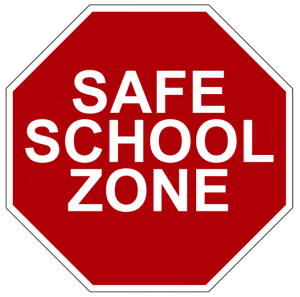As teachers, it is our responsibility to keep our students safe at school. I tell my students that keeping them safe is my first job as their teacher. My second job is to teach them something. As a teacher, knowing your rights and responsibilities in the teaching profession is key to protecting yourself and your students. Below is a a short summary of highlighting areas that I thought would be relevant to new teachers. In the endeavor to be accurate, I decided to copy sections from the advisory instead of paraphrasing. Please refer to the Ontario College of Teachers’ document, Professional Advisory on Safe Learning Environments 2013 for further details.
Professional Advisory on Safe Learning Environments 2013
(The Council of the Ontario College of Teachers approved this professional advisory on April 4, 2013.)
INTRODUCTION (as per OCT): When student safety and well-being are involved, teachers’ “foresight, knowledge and professional judgment are essential … Recognizing student vulnerability and acting to mitigate it is a teacher’s professional responsibility”.
ETHICAL UNDERPINNINGS (as per OCT): The Ontario College of Teacher’s Ethical Standards for the Teaching Profession and the Standards of Practice for the Teaching Profession state that the ethical standard “principle of care holds that members express their commitment to students’ well-being and learning through positive influence, professional judgment and empathy in practice.”
LEGAL IMPLICATIONS (as per OCT): Relevant legislation, policies, standards and guidelines for legal implications include the Child and Family Services Act and the Occupational Health and Safety Act. “For example, under the Child and Family Services Act, OCT members are obligated to report any suspicions to a children’s aid society that a child is or may be in need of protection. The obligation to report directly is on the individual — teachers cannot rely on another person to report on their behalf.”
DISCIPLINARY IMPLICATIONS (as per OCT) : “The responsibility of Ontario Certified Teachers for student safety extends to their treatment of students during daily interactions. Not following the advice contained in the professional advisory could lead to issues of professional misconduct.”
ADVICE TO MEMBERS: MINIMIZE THE RISKS (as per OCT) : See document, Professional Advisory on Safe Learning Environments 2013, for further details.
KNOW YOUR PROFESSIONAL RESPONSIBILITIES (as per OCT): “Ontario Certified Teachers have a professional responsibility through due diligence to safeguard and educate students who have been placed under their care. Jointly with school administrators and key stakeholders, teachers are responsible for creating safe and healthy instructional settings integrating hazard identification, assessing the risks and controlling the situation in all aspects of the facility. Due diligence refers to taking every precaution reasonable in the circumstances to avoid injuries.”
A FRAMEWORK FOR DEALING WITH SAFETY IN LEARNING ENVIRONMENTS (as per OCT)
RECOGNIZE, REPORT AND REFLECT (as per OCT)
Recognize: that incidents involving student safety generally occur when teachers least expect them.
Report: Following a safety-related incident, report the incident and actions you have taken to your direct supervisor and to appropriate health and safety representatives.
Reflect on the incident:
- What happened?
- Was my reaction appropriate? Yes/No. In what way?
- Was my conduct in keeping with the ethical standards of my profession (care, respect, trust and integrity)?
- Was my conduct in keeping with the standard of commitment to students and student learning?
- Do I review safety instructions and procedures regularly and make improvements, as needed?
- What could or would I do differently if faced with another similar situation?
- Do I know how to recognize an unsafe situation and where can I go to better prepare or access additional training?
- What have I learned from this experience?
- Would others benefit from what I have learned and how can I share this information?
ACT PROFESSIONALLY (as per OCT): Know your obligations, Talk with other professionals, Regard your own professional development as a personal responsibility. See document, Professional Advisory on Safe Learning Environments 2013, for further details.
Ontario Certified Teachers should be able to say with confidence (as per OCT):
- My actions show that I treat students with care, respect, trust, and integrity.
- I am aware of the legal parameters that guide my professional practice.
- I am familiar with my school/employer’s policies and emergency procedures regarding student safety.
- I reflect on past occurrences, monitor ongoing situations, and prepare for the unexpected.
As a teacher, I know my first priority is to keep my students safe. For students, school should be a safe place to learn without verbal, physical, psychological, emotional and/or sexual harm. While ensuring a safe learning school environment, it protects both students and teachers.
To protect yourself and your students, know your rights and responsibilities.
Collaboratively Yours,
Deb Weston

